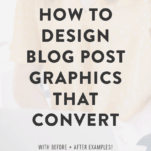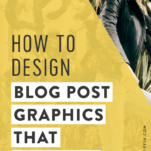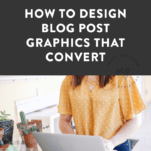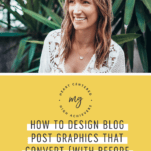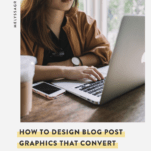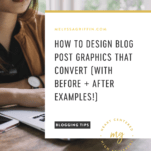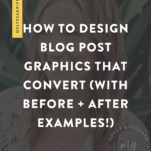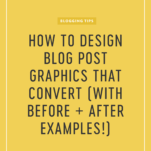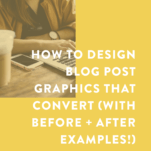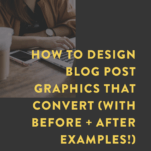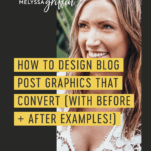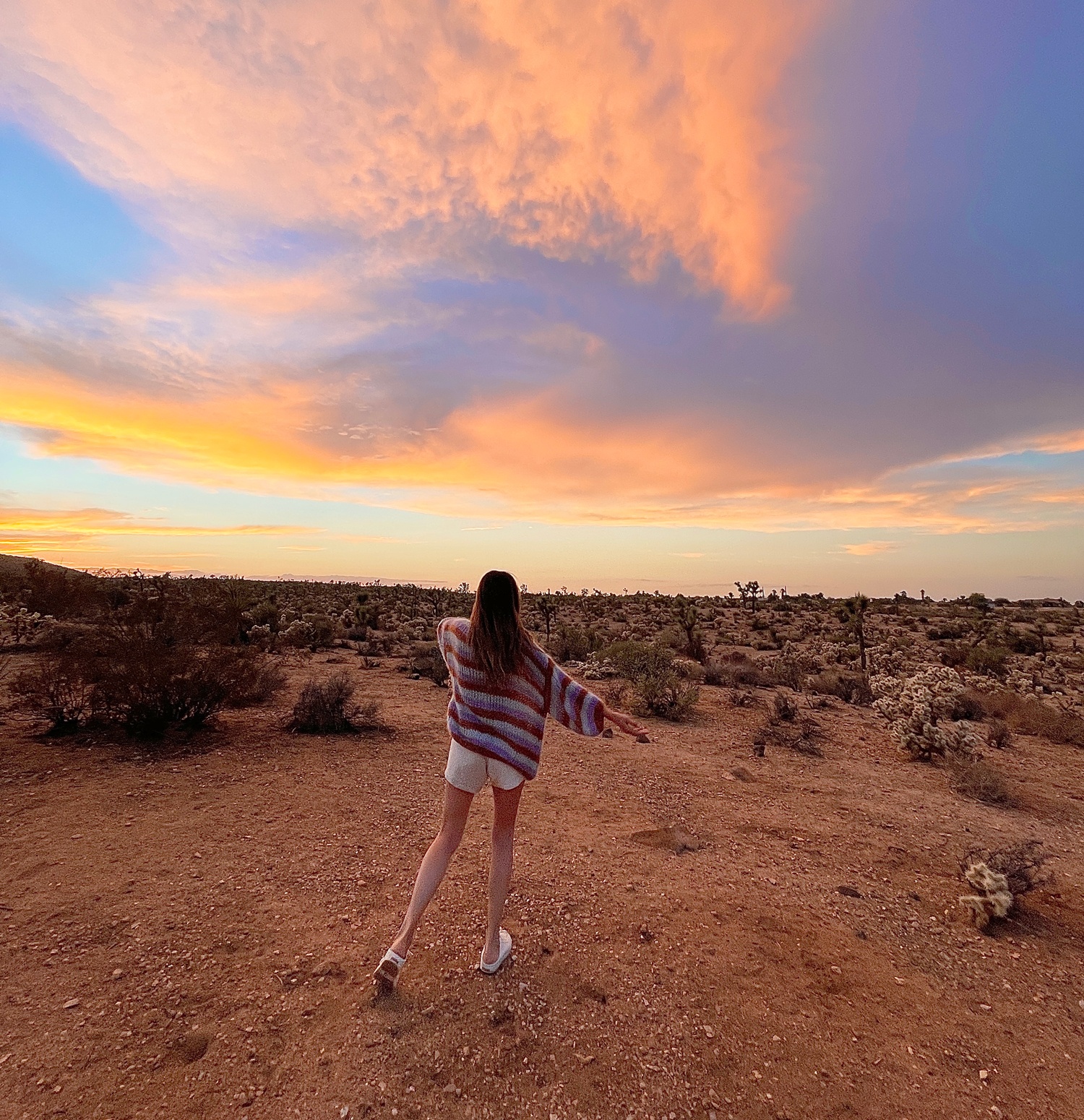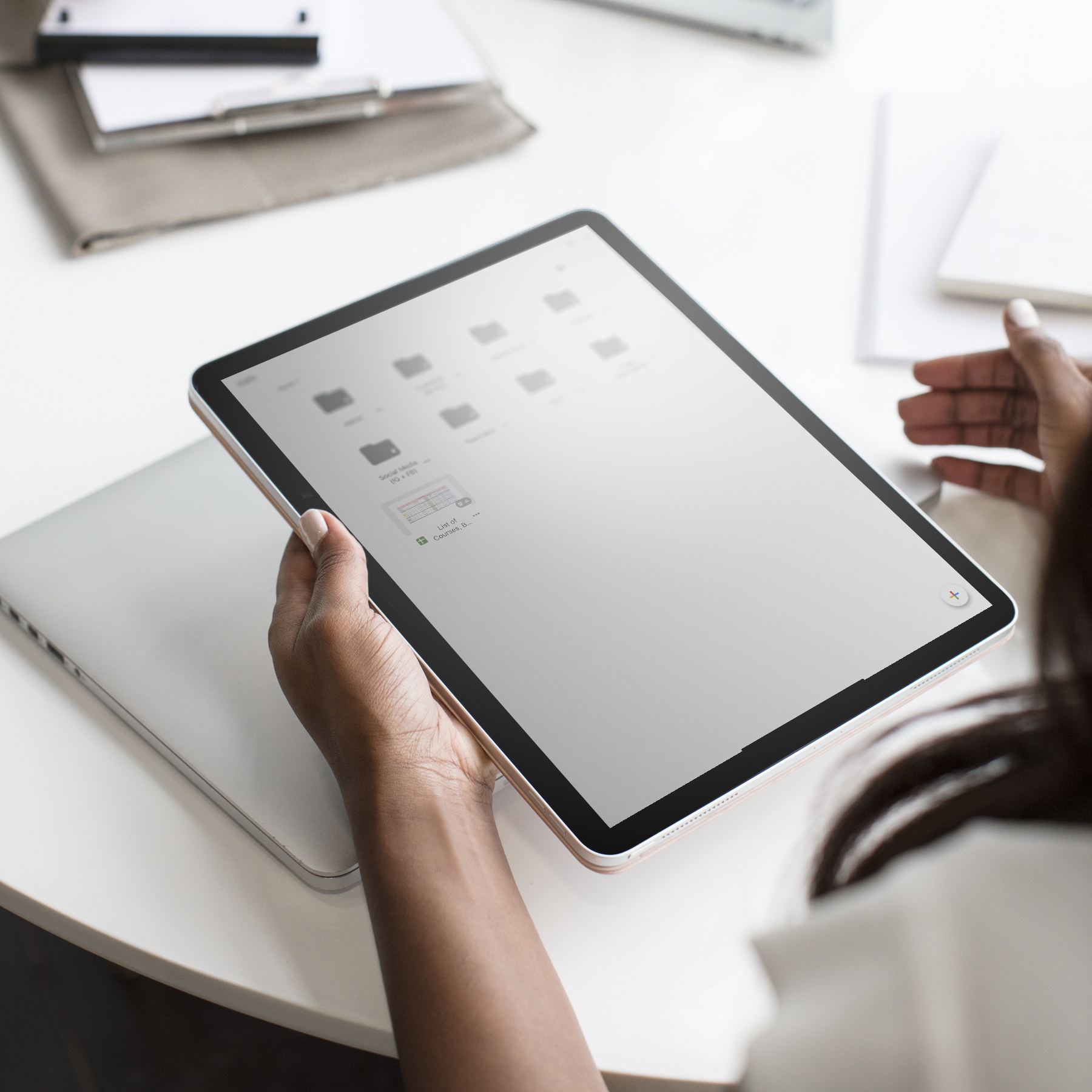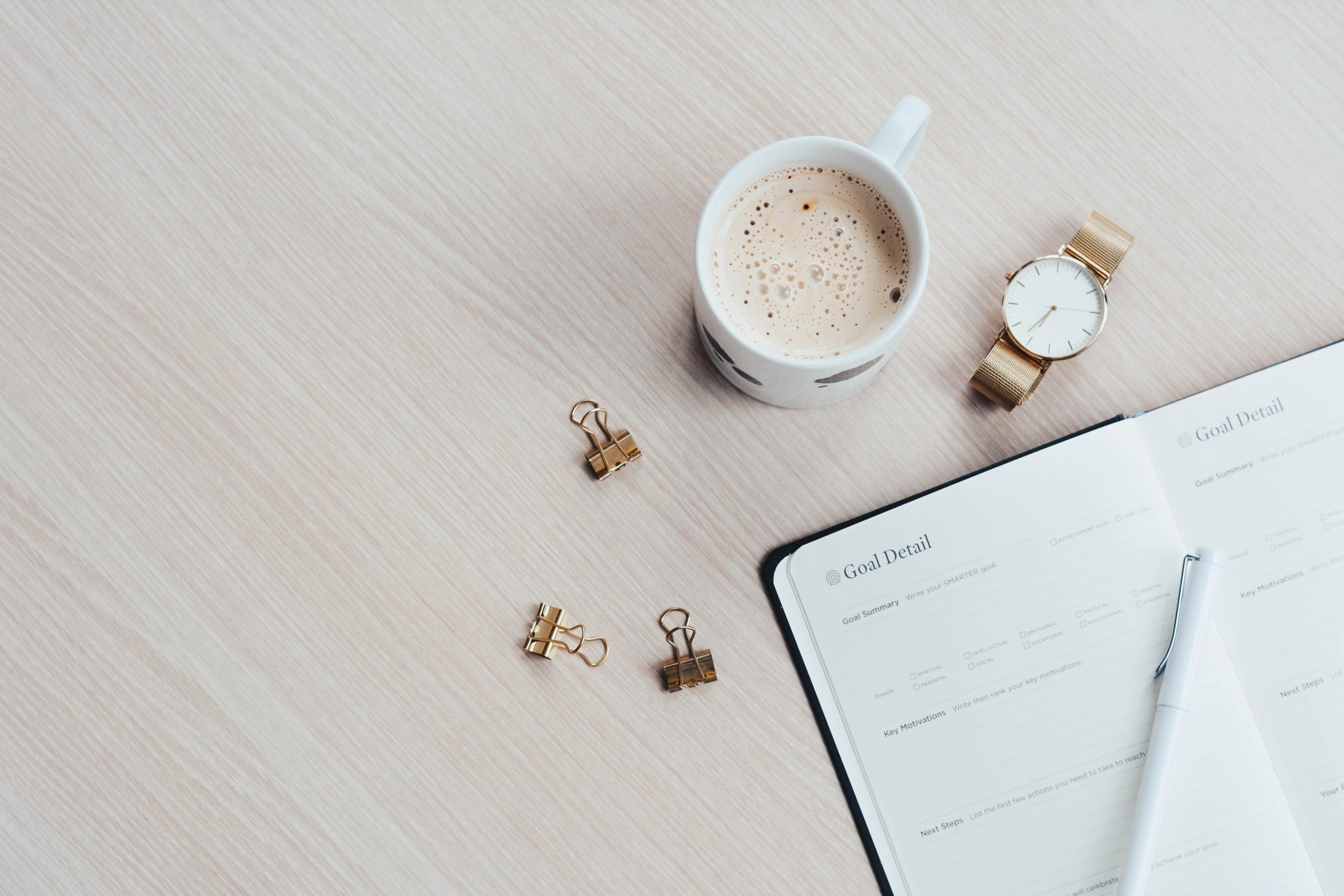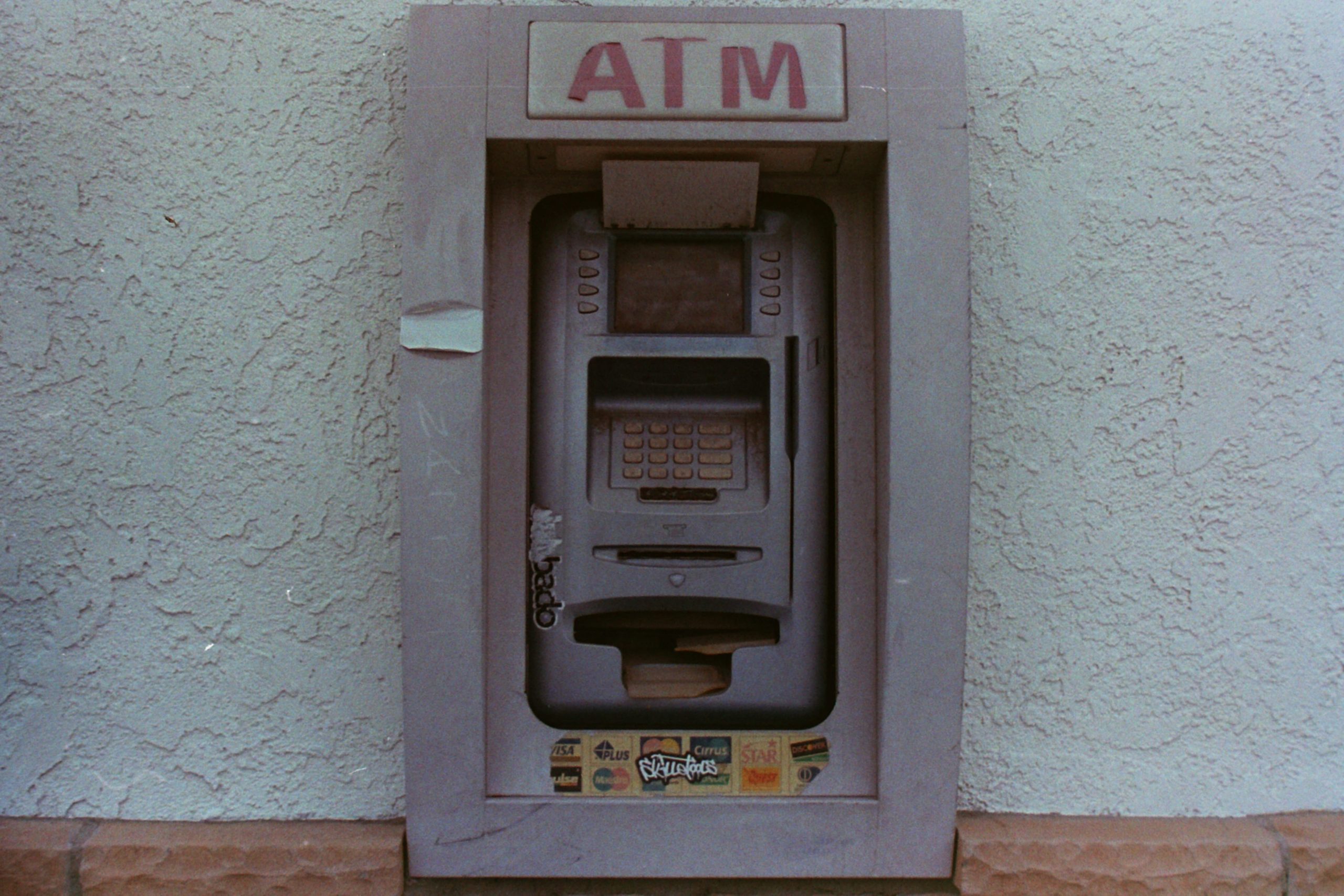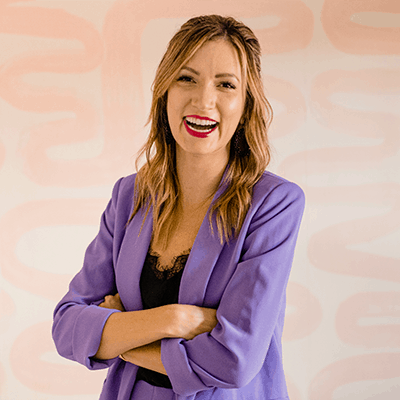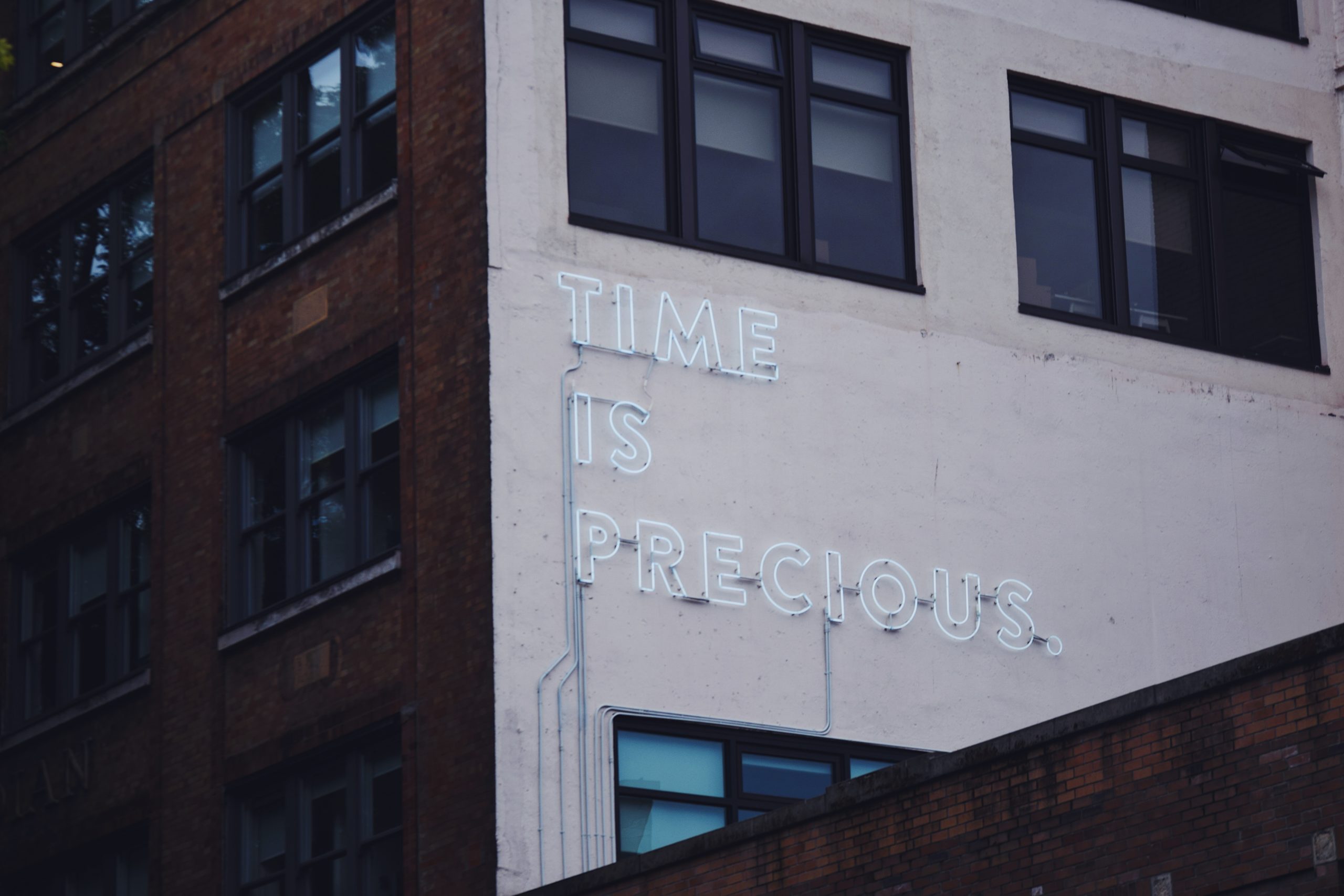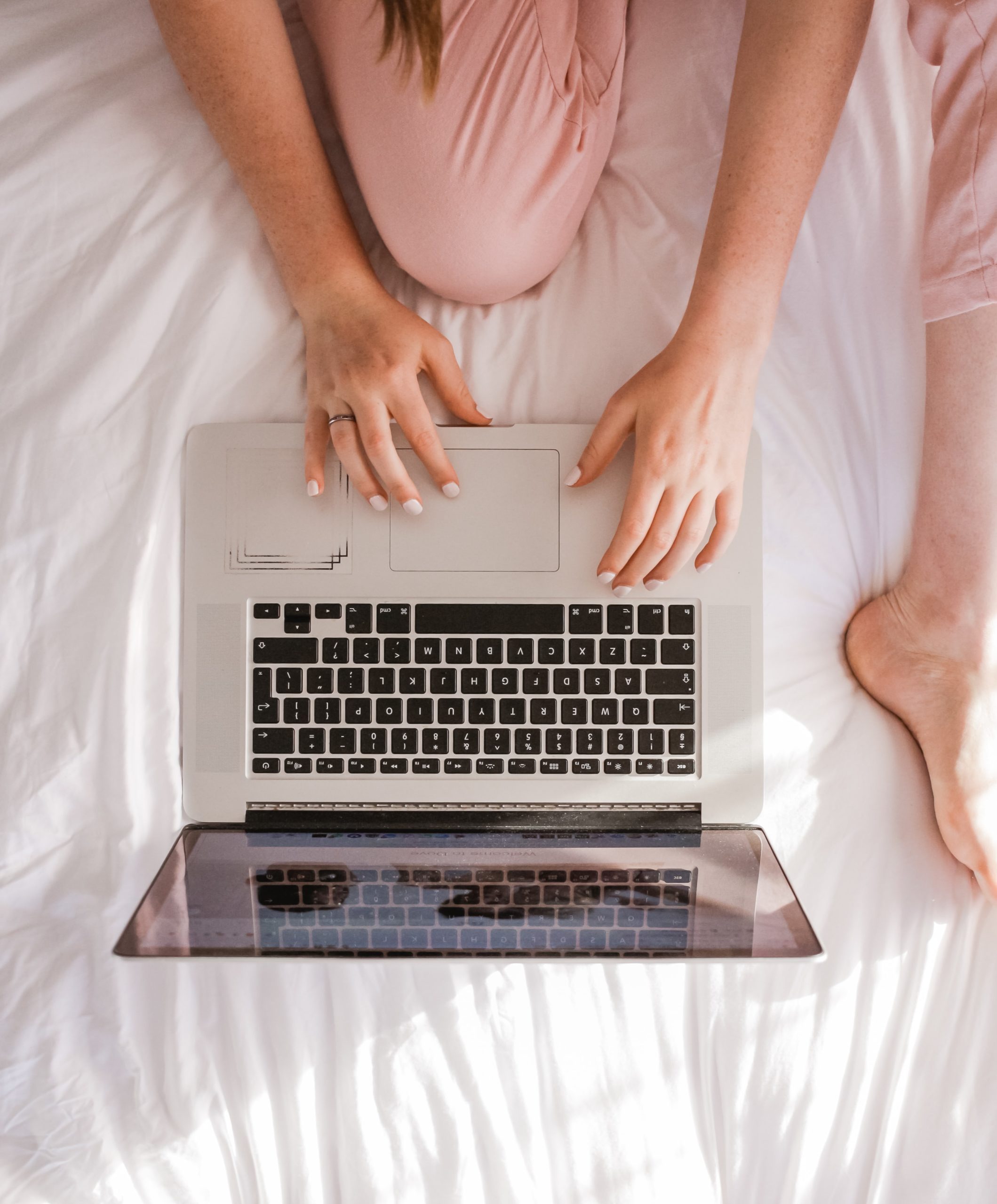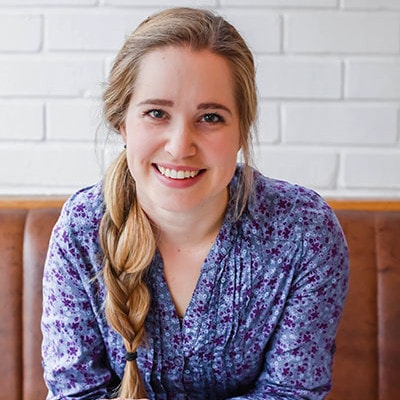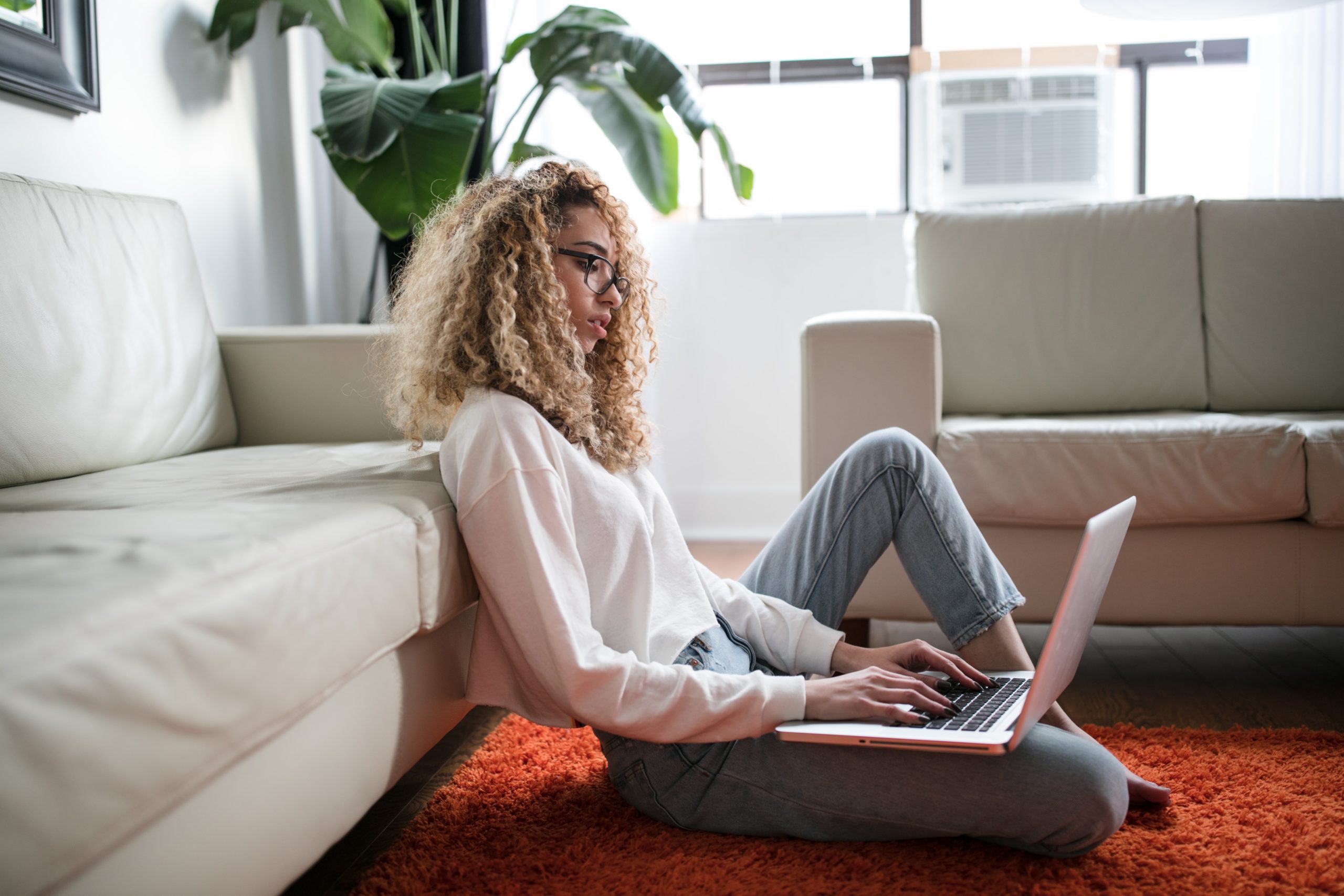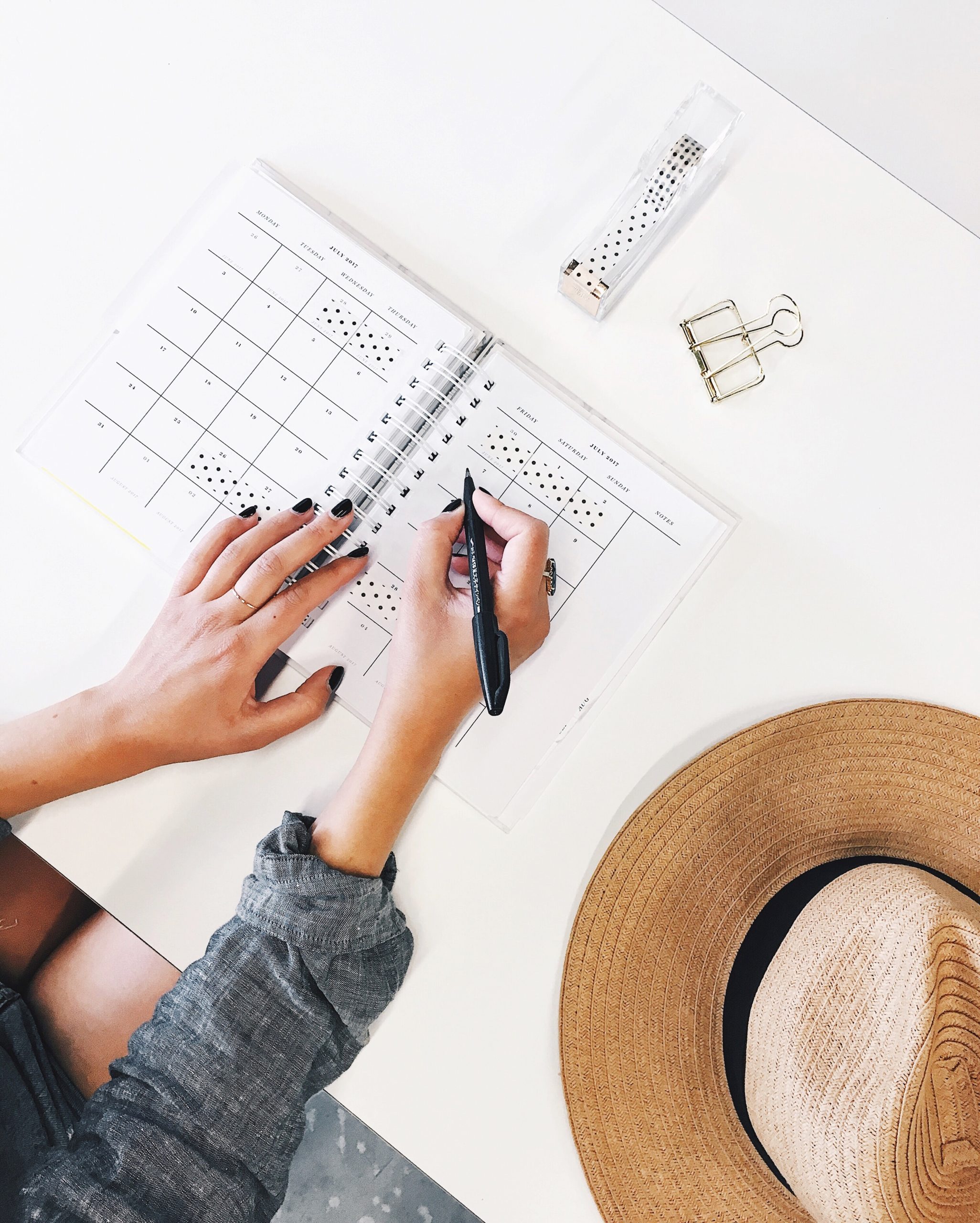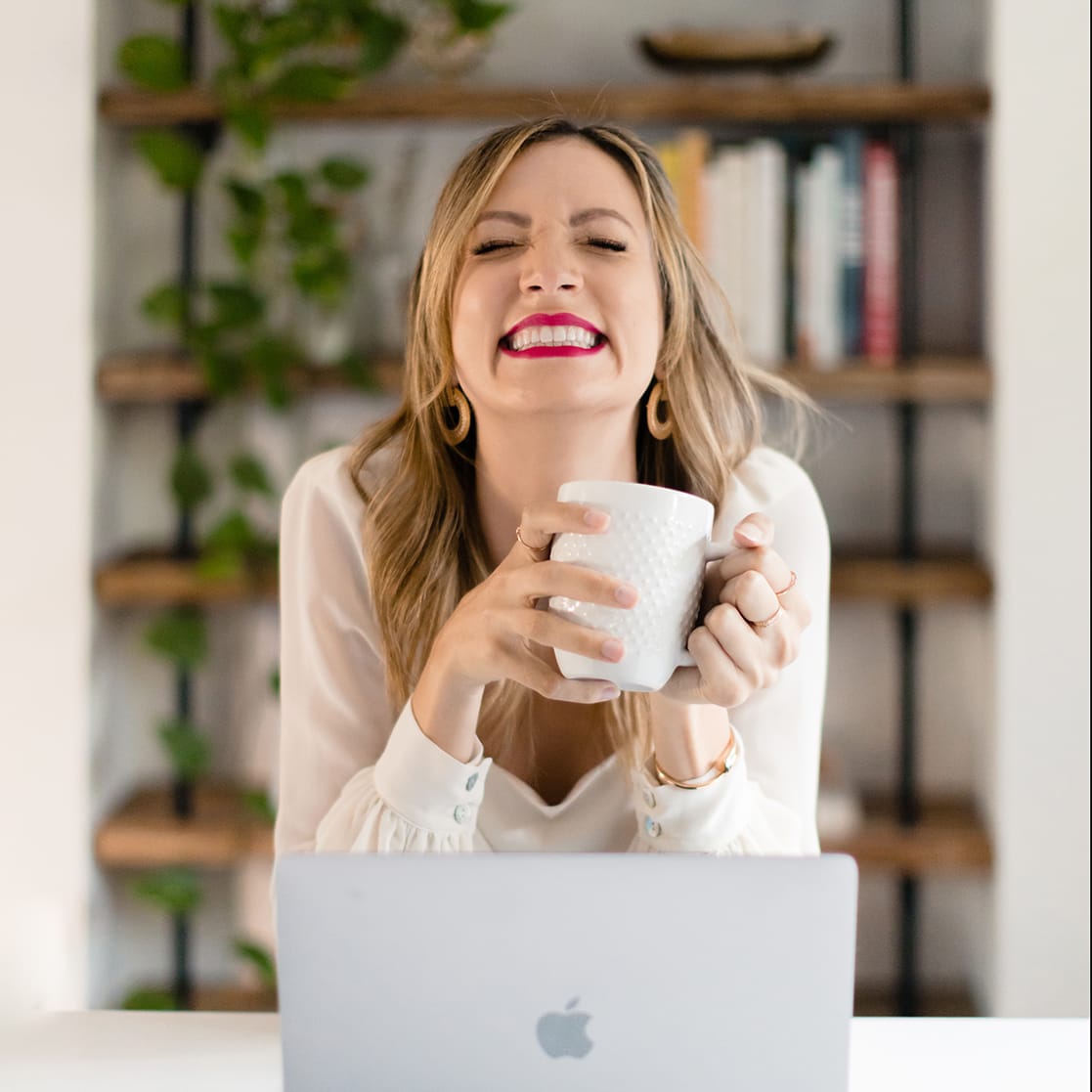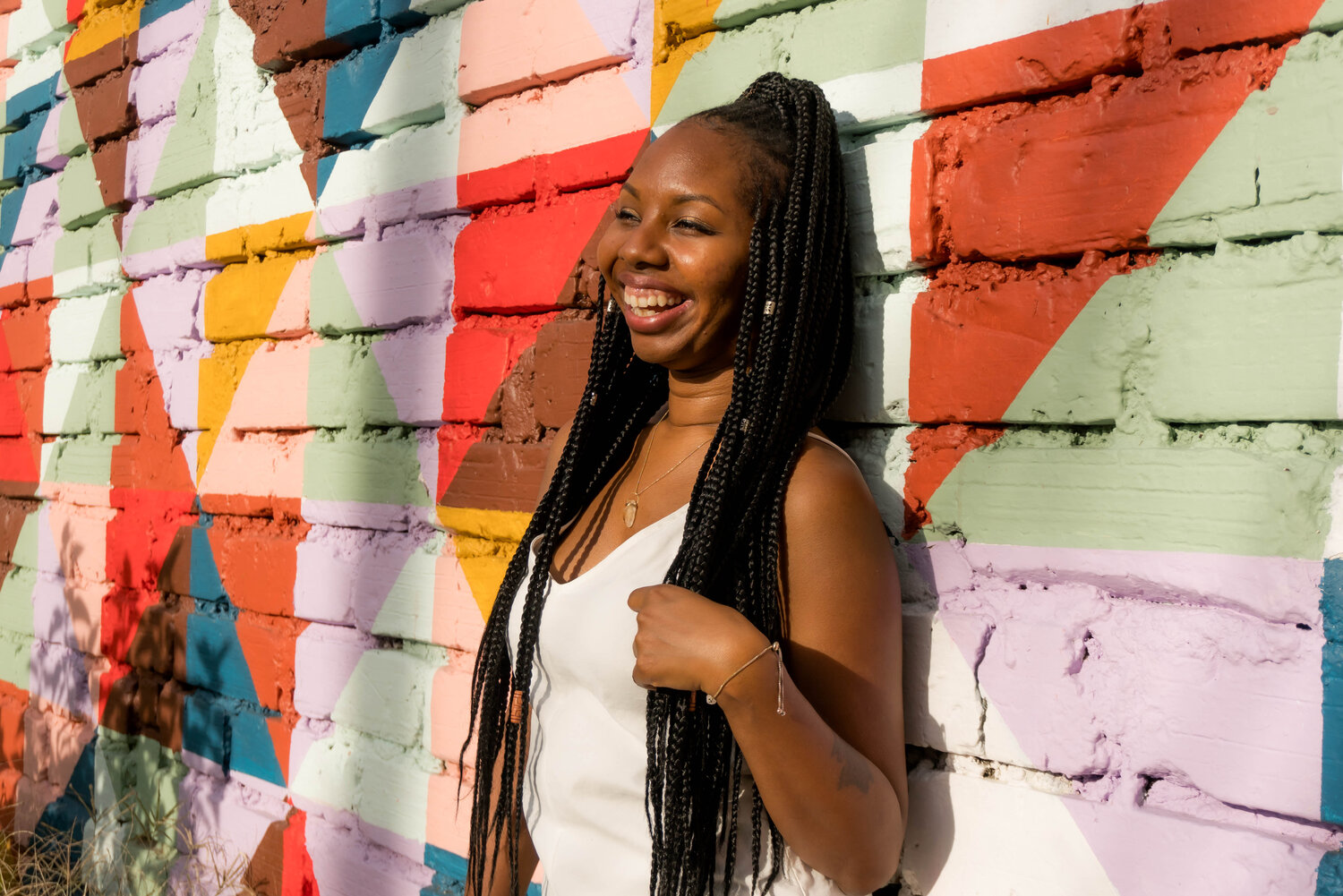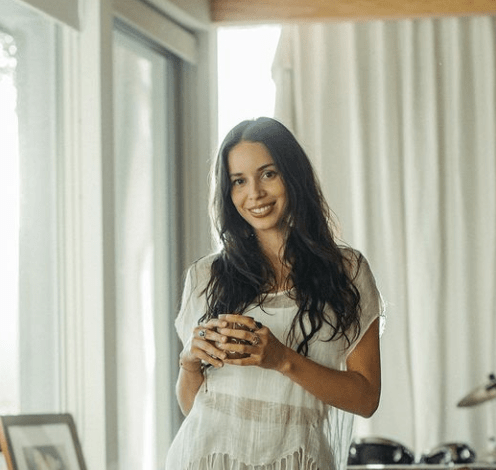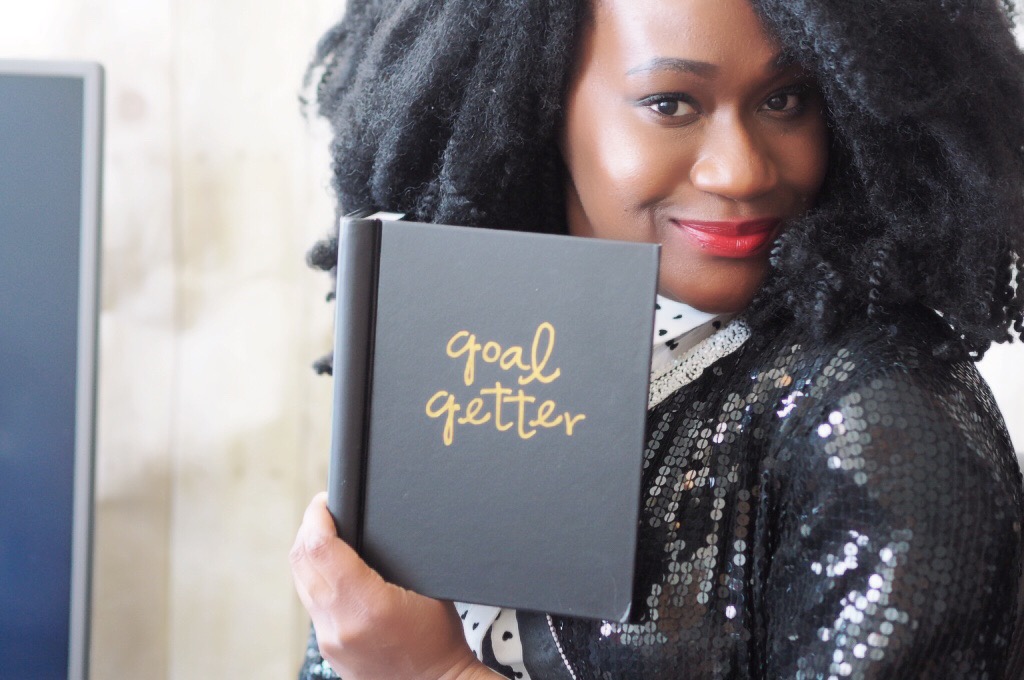I’ve talked before about the impact that Pinterest can have on your blog or business. Simply put, it’s an incredible marketing platform that has the potential to grow your site’s traffic, email list, and audience…on autopilot.
I also told you that Pinterest is more akin to Google than it is to any social media platform. That’s because Pinterest is a search engine above all else.
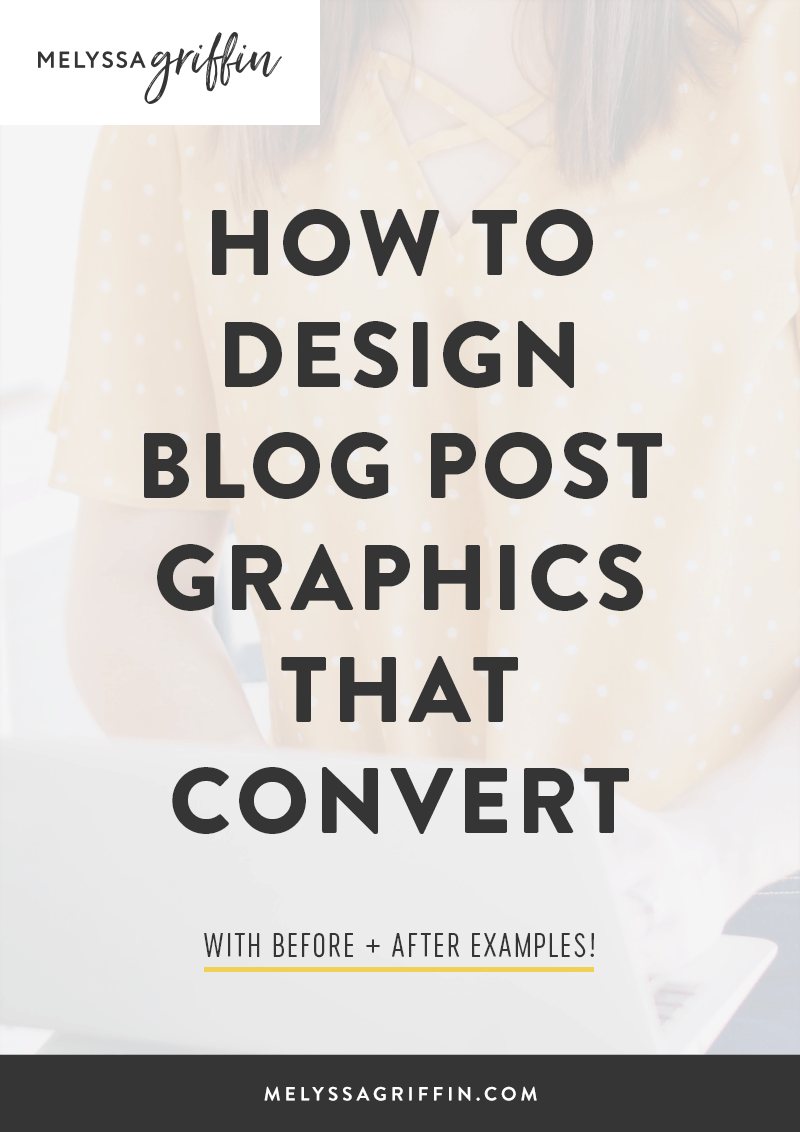
But what sets Pinterest far apart from its nerdy Google counterpart? (Don’t worry, I still love you, Google).
It’s visual.
Which means that if you’re not creating beautiful (AND strategic) graphics, then it will absolutely dull your performance on Pinterest.
So, what goes into a high-converting blog post image? One that will get thousands of repins, heaps of traffic to your site, and the potential to grow your email list or go viral? It’s not just good photography or pretty fonts.
In fact, there are seven specific things you should add to all of your Pinterest images, which we’ll cover in depth today!
I’ve also got plenty of before and after examples so that you can see the actual results that better graphics can have for you, too.
Let’s dive in, yes?
First, let me share a little comparison of my own blog post images through the ages. This will give you a good idea of where I went wrong and what you can change, too.
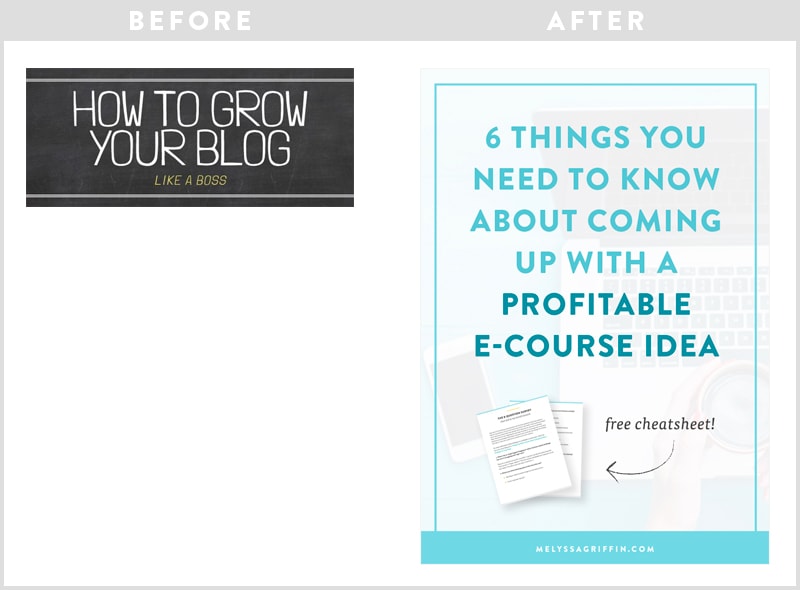
The image on the left was created in my first year of blogging (when I clearly thought I knew everything about blogging after a handful of months in the game — ha!). I love that this image has a large, clear title. You immediately have an idea of what the post is about and the title makes it easy to read.
But that’s where the compliments end. *gasp*
Although the image on the right is for a different blog post, it’s got a whole lot goin’ for it.
Unlike the image on the left, my new image template is vertical (which makes it more visible in Pinterest’s feed), has a larger title that is hyper-specific, references a freebie you’d get by clicking through, includes a link to my website, and is just more well-designed overall.
One afternoon, I went through most of my old blog images and updated them with new, on-brand, Pinterest-ready graphics. I then pinned those new graphics onto Pinterest.
Almost immediately, I saw a jump in my traffic. My new images (like the one you see on the right above) were taking off. In three months, my once-stagnant traffic had grown by 100,000 pageviews. And part of that is certainly due to the new images I’d created as part of my Pinterest strategy.
Today, I want to help you pinpoint what you could change about your own images in order to get the BEST results on Pinterest and the web as a whole.
Here are seven things all of your images should include:
1. Large, easy-to-read text
When people are scrolling through their Pinterest feed, they’re not taking time to read every single description. They want to know exactly what they’ll get out of your blog post at first glance.
By adding a large title on your image, you’re showing people the value that you’re giving away in your post, and enticing them to click through or repin it.
Here’s a before and after example from one of my Pinfinite Growth students, Emma Rose, who is a graphic designer and photographer.
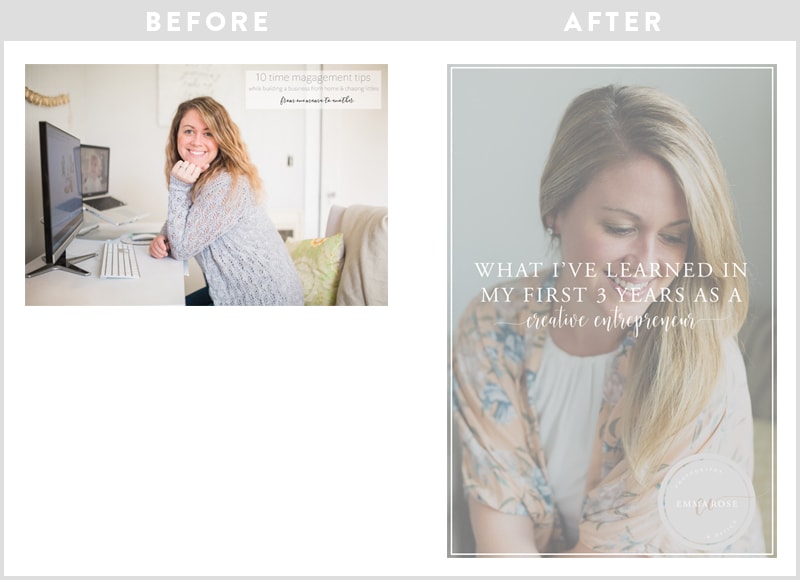
Although I love her sweet little face in the “before” picture, the title is very difficult to read. This type of image may work inside of a blog post, but will not get many repins or click-throughs on Pinterest, simply because people don’t know what they’d be getting out of the post at first glance.
But that “after” image? What a stunner! The image itself is captivating and draws you in, while the text stands out more and lets you know what you will get out of her blog post if you choose to read it.
I also love that the image is vertical, as this will stand out much more in Pinterest’s feed.
Four months after using my Pinterest strategies and updating her blog post images, Emma Rose grew from 50 followers to over 1,300. And her pageviews have more than doubled. Huzzah!
But what if you blog about something that doesn’t lend itself to adding text on top of your image?
For example, fashion, art, or hobby photography. In that case, focus on the takeaway that someone will get out of your post. Is it “20 Photos of Belize That Will Inspire You to Travel”? Or perhaps “How to Wear Plaid for Fall”?
Even if you’re in an artistic niche, you’re still providing some sort of value to your audience. Use that value to write a headline for your blog post and then add it to your graphic.
And of course, you only need to add text to one image in your post. You can add plenty more images of your beautiful artwork, style, and photography — just make sure to have at least one that you can utilize on Pinterest.
2. Vertical vs. Horizontal
As you can see from the first two examples above, vertical images just appear larger in the Pinterest feed. This is because all images are the same width, so horizontal images will naturally have a smaller height than vertical images.
I recommend adding images that are 800 x 1200 pixels. For reference, that’s the size of the image I used for this blog post at the very top.
If you only take TWO tips from this entire post, make it #1 and #2. Having vertical images with text on top is critical to getting more traffic to your website from Pinterest.
Here’s an example from one of my Pinfinite Growth students, Jessica, who recently created a vertical image template for her blog posts. Before, she was just adding the horizontal images into her posts with no text. Now, she has a vertical image with a clear title right on top.
And notice how Jessica combined two horizontal images to create a vertical image. Genius!

3. On-brand colors and fonts
I was the WORST at staying “on-brand” when I started my blog. Blogging, for me, began as a creative outlet, so I wanted to try ALL THE THINGS. Every month, my blog had a new design. And almost everyday, I experimented with new fonts and graphics.
Experimentation is great in the beginning when you’re trying to find your style and groove, but after awhile, it’s important to really hone in on your brand’s identity. In order to do that, I recommend creating a style guide for your brand.
A style guide allows you to pinpoint your brand’s personality, fonts, colors, and more, to ensure that you stay consistent.
Because here’s the deal on Pinterest: there are over 100 MILLION users (which means there are a LOT of pins to compete with). If your pins are sporadic and inconsistent, then the peeps on Pinterest are not going to recognize you.
But if all of your images followed the same theme, template, colors, and fonts? Then it’s a lot more likely that Pinterest users will eventually “recognize” your brand on Pinterest.
They’ll think, “hey, I feel like I’ve seen an image like this before!” It adds an almost omnipresent effect to your brand, where someone subconsciously deems it as “better” because you appear to be everywhere at once.
Eventually, they’ll be more inclined to click through to your website, either out of admiration or curiosity, and then you have the chance to convert them into a subscriber or customer. #boom.
4. Your website link
The very nature of Pinterest is that people are taking an image from your website and then putting it somewhere else on the internet (their Pinterest boards). Generally, that pin is designed to link back to your website to keep everything connected. But what if there’s a glitch? Or if someone removes the link? Or — gasp — uses your pin for their own blog post? Then you’re out of luck, my friend!
This is one reason why adding a link to your pin is important. But it’s also useful because it works similarly to #3 — people begin to know your brand name and website link. When we see something over and over again, eventually it feels familiar.
Keep this in mind: humans are designed to care more about what’s in it for them (especially people who have never been to your website!). So, if they’ve never heard of your website name, then adding a huge link on your pin doesn’t add any value for your potential visitors — it doesn’t answer the “what’s in it for me?” question.
Instead, add a large title to your pin (which tells your viewers what the takeaway is for them) and keep your website link relatively small.
5. Keywords in the file name
I’m not sure that this one will help on Pinterest (though, it’s possible!), but it can certainly help drive more traffic from Google, so I wanted to include it.
This tip is simple: instead of naming your blog post images something like “275_45.JPG,” you should include keywords in the image name itself. Keywords are words or a phrase that someone may be searching for (on Google or Pinterest) in order to find your blog post or graphic.
For example, all of the images in this blog post are some variation of “pinterest-graphics.JPG.” That way, if someone searches for “pinterest graphics,” then it’s possible this blog post will come up in their search results, simply because I named my images something relevant to the takeaway of this post.
6. Reference to an opt-in incentive (if applicable)
This is one of my favorite tips! Since early 2015, I’ve used Pinterest strategically in order to drive more traffic to my website. At the beginning of 2015, my email list was very stagnant. It initially grew to about 2,000 subscribers when I first advertised my new email list to my audience (it grew to 2,000 because that’s about how many people were in my audience at the time).
But after it grew? It remained stagnant for over six months — I was barely getting any new subscribers because I wasn’t attracting new people to my blog.
Then, all of a sudden, after implementing my Pinterest system, my number of subscribers quadrupled to 8,000 people in 6 months, and was growing exponentially.
Now, I get between 8,000-10,000 new subscribers every single month, which is largely due to the new people Pinterest drives to my blog on a daily basis. It still amazes me.
So, you’ve heard the results this can bring you…now what does this mean for your images?
It means that if you have some sort of incentive for people to join your list (a free worksheet, email course, PDF download, etc), then you should put it right on top of your Pinterest image so that it’s immediately evident that someone will be able to get a valuable freebie if they click through to your post.
Here’s an example of a few of my own images that use this strategy:
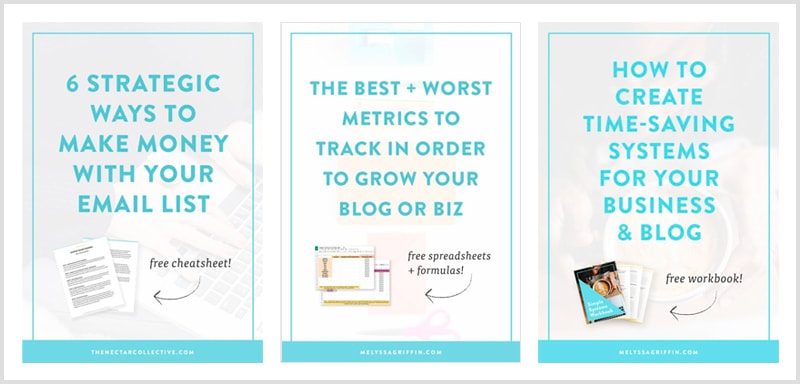
You can see that right on top of the image, I let people know what kind of freebie they’ll get. If someone is already interested in the topic (especially while scrolling through their Pinterest feed), this can be the tipping point that gets them to click-through. Then, they’re likely to subscribe.
7. Evergreen content
Aaaaand last but not least, Pinterest is not the place for time-sensitive information, like one-time events or webinars. Pinterest looks for evergreen content, which is content that is timelessly valuable.
Sometimes, you’ll find that a year later, one of your old pins is going viral. This is part of the beauty of Pinterest — like Google, old content can quickly become popular.
But if your content isn’t evergreen, then it doesn’t stand a chance. #realtalk.
Here’s an example from my Pinfinite Growth student, Paola, whose “before” image is pretty and well-designed, but its square size and time-specific content isn’t right for Pinterest.
Her “after” example is stellar though, isn’t it? The text is easy-to-read and the image itself offers a very clear takeaway to people scrolling through their feed.
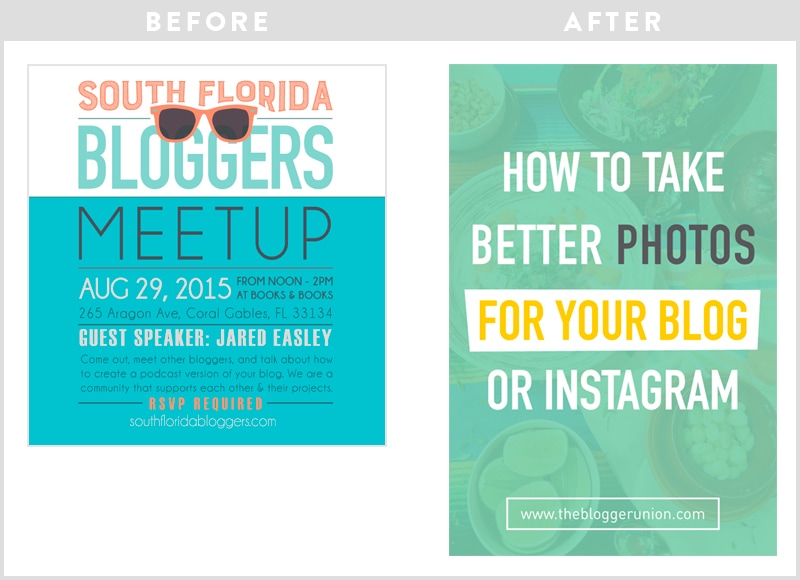
Paola told me that just two weeks after updating her Pinterest images, her daily viewers from Pinterest quadrupled and her pageviews increased by 10x, from 50 daily pageviews to 500 daily pageviews. Whoa!
If you put all of these tips together, you’ll be well on your way to creating Pinterest images that convert users into new traffic, subscribers, and engagement.
Got a question? Something to add? Let’s chat in the comments section down below! (I respond to every single comment). 🙂

